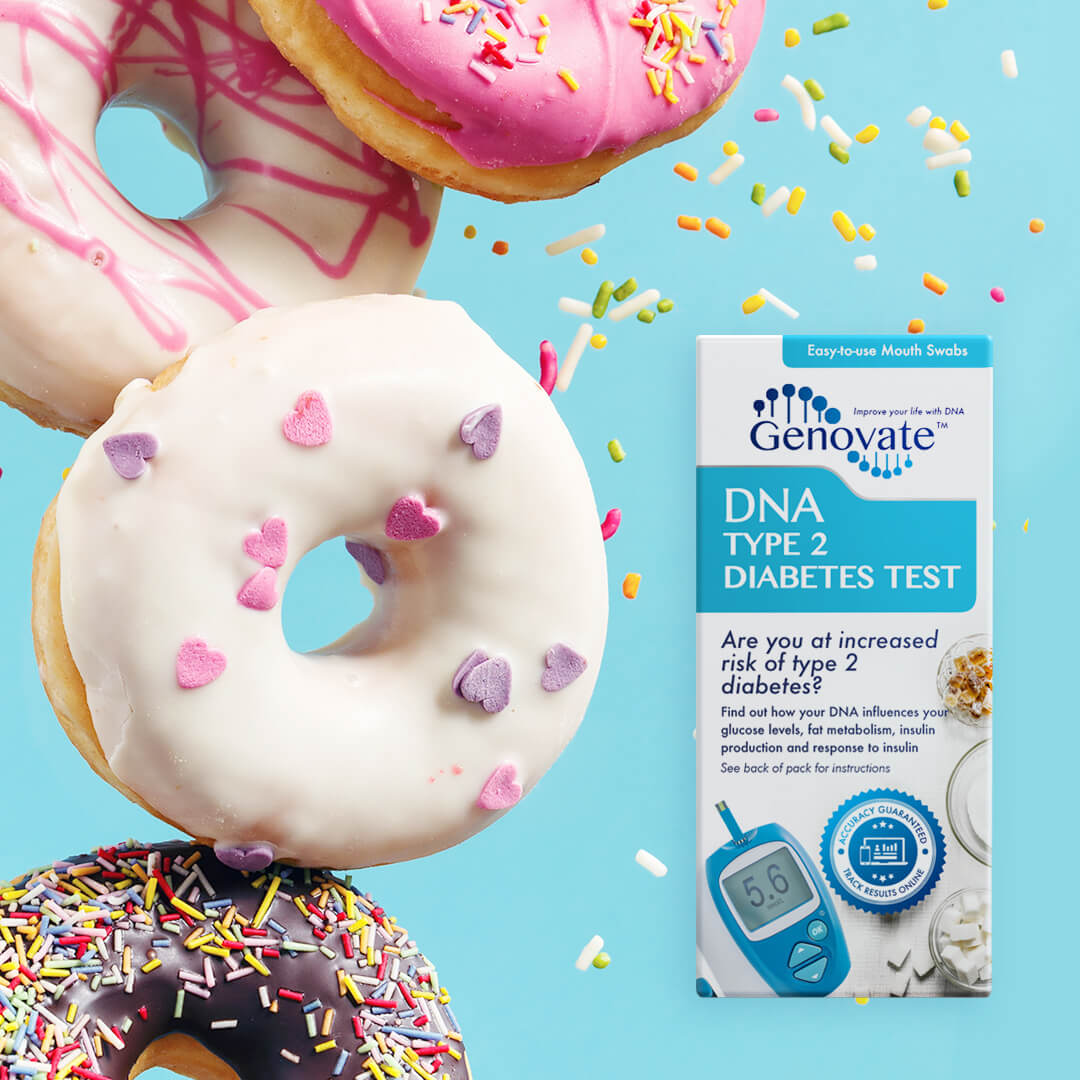Description
Detailed Description
Type 2 diabetes is a metabolic disorder that disrupts the body’s normal glucose and insulin balance. It is generally associated with unhealthy lifestyles and extra body weight, but genetic variations can also increase your risk, regardless of your lifestyle.
Glucose is the primary source of energy used by the cells in our bodies. The levels of this simple sugar are regulated by the hormone insulin, produced by the beta cells of the pancreas. People with type 2 diabetes do not make sufficient amounts of insulin, therefore have consistently high blood sugar levels.
With a simple mouth swab you can find out whether you have inherited DNA changes that increase your risk of type 2 diabetes.
The Genetics
Genetic variations can affect our glucose and insulin levels, sensitivity to dietary fatty acids, and the way our body responds to insulin, resulting in increased risk of type 2 diabetes. Knowledge of genetic variants that increase your risk of type 2 diabetes allows you to make lifestyle changes today, to reduce your risk of this debilitating condition.
Variants Tested:
| Gene(s) Tested | Effect |
| ACC2 | Reduced response to insulin |
| ADCY5 | Inhibited secretion of insulin |
| FABP2, FTO | Increased uptake of saturated fats |
| ADIPOQ, CRY2, FADS1, G6PC2, GLUT2, MTNR1B, PROX1, TCF7L2 | Increased fasting glucose levels |
| GCKR | Reduced fasting glucose levels |
| GCK, HNF4A | Reduced pancreatic beta cell function |
| GLIS3, IRS1, SLC30A8 | Disrupted insulin production/signalling/storage |
| SHBG | Increased sex hormone binding globulin |
| MADD | Impaired proinsulin-to-insulin conversion |
| SOD2 | Increased reactive oxygen species |
| HIF1A | Resistance to hypoxia |
Discover More
How many diabetes risk factors do you have?
- Genetic variation
- Family history of type 2 diabetes
- Obesity and fat accumulation (around the abdomen)
- Lack of physical exercise
- Ethnicity (Africans and American Indians have a higher risk)
- Prediabetes – elevated blood sugar
- Gestational diabetes
- Polycystic ovarian syndrome
How it Works
STEP 1.ORDER YOUR KIT: Purchase your kit online.

STEP 2. COLLECT & SEND
Quick and painless DNA sample collection in the comfort of your own home. Mail your sample back to our lab for testing.
STEP3. VIEW RESULTS
Receive your results by mail or email, or view online.












